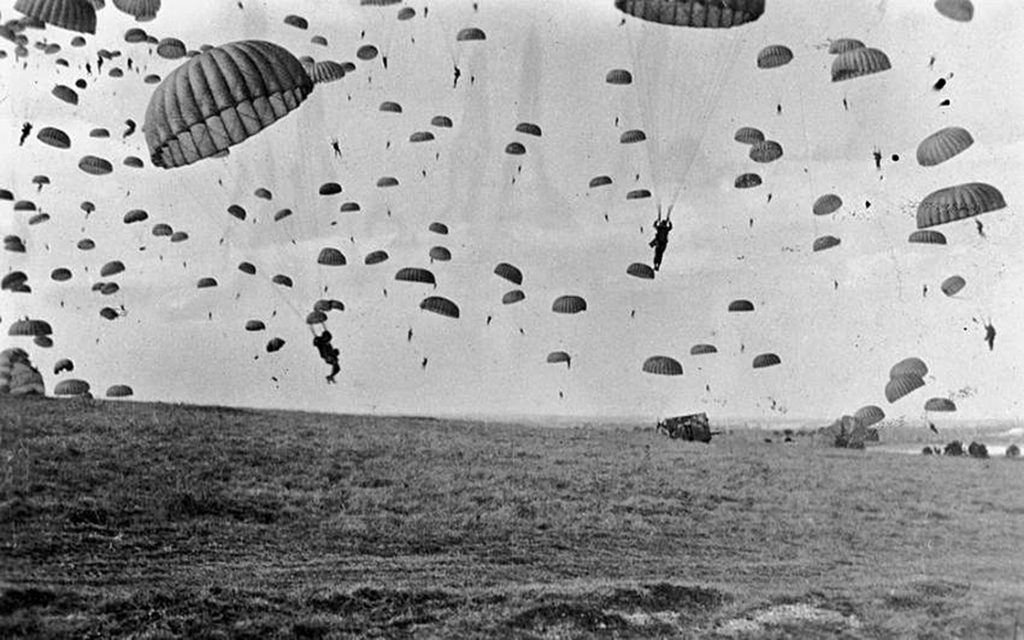Operation Market Garden
The Mission

In the summer of 1944, General Bernard Montgomery came up with a plan to cross the River Rhine and advance deep into northern Germany to shorten World War II.
General Montgomery named his two-part plan Operation Market Garden; Market was the airborne operation employing three divisions: the U.S. Army’s 82nd and 101st Airborne Divisions, the British 1st Airborne, and the 1st Polish Parachute Brigade. This group formed the first Allied Airborne Army, and their objective for this mission was to seize key bridges in the Netherlands after landing by parachute and glider. Once the airborne troops landed, the British XXX Corps would advance over the bridges and cross the Rhine and its tributaries (the Garden portion of the operation). The bridges were at Eindhoven (around 13 miles from the start line), Nijmegen (53 miles away), and Arnhem (62 miles away), as well as two smaller bridges at Veghel and Grave that were between Eindhoven and Nijmegen.
If successful, the plan would open a route into the German industrial heartland, the Ruhr Valley, and liberate the Netherlands- ending the war early.
What Went Wrong
On September 17, 1944, several thousand allied airborne troops dropped from the sky into the Nazi occupied Netherlands. More landed the next day, and the day after. Eventually all the bridges were captured; however, the plan failed largely because the British XXX Corps did not reach the furthest bridge at Arnhem before German forces overwhelmed the British defenders. This occurred because Allied intelligence failed to detect the presence of German tanks.
Around 10,000 men from the 1st British Airborne Division and the 1st Polish Independent Parachute Brigade landed at Arnhem, but their landing zones were seven miles from the bridge at Arnhem. Only one battalion ended up reaching the objective, and all of the other troops were squeezed into a pocket at Oosterbeek. The airborne Soldiers had very few weapons to resist the German tanks, which led to many deaths and captures.
Although units of the XXX Corps captured Nijmegen bridge in conjunction with the U.S. 82nd Airborne Division ( a success that came at a high price with countless Soldiers paying with their lives), they could not reach the furthest bridge at Arnhem to help the airborne soldiers. Much of its advance was along a single narrow causeway, which was vulnerable to traffic jams and German counter-attacks. Operations were also hampered by a shortage of transport aircraft. For instance, the airborne troops were flown into the Netherlands in three lifts rather than all together. The wooded landscape also restricted the range of wireless sets, so communication failures also reduced the possibility of reinforcement.

The Outcome
On September 25, it was painfully clear that the 1st Airborne’s position was untenable; the evacuation began that same day, and only a little over 2,000 troops made it back safely over the Rhine. Some 6,400 paratroopers who landed in Arnhem were killed or were captured. Following this failed operation, the crossing of the Rhine and the capture of Germany’s industrial heartland was delayed for six months.
Although Operation Market Garden ultimately failed to achieve its objectives, the determination and courage shown by the airborne troops, and the units that assisted them, made it one of World War II’s most famous battles.
ASOM Artifact
Buckle Boots

This new style of boot was issued to the 101st and 82nd Airborne Divisions before Operation Market Garden. They were designed by the quartermaster to replace all special- issue boots.



